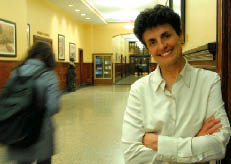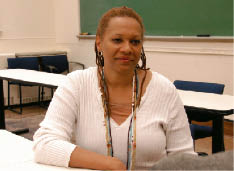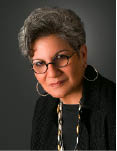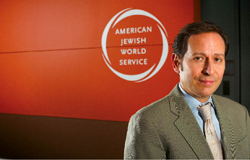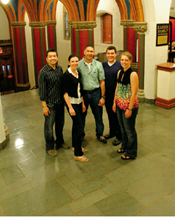High-Class Help
A unique TC course on consulting is winning rave reviews from nonprofit clients. The price isn't bad, either
Two years ago, Armando Peralta and three other TC students visited the Hetrick-Martin Institute (HMI), which manages New York City’s Harvey Milk High School and provides counseling and legal assistance to teenagers who are lesbian, gay, bisexual or transgendered. The TC group had come as part of a unique course, offered through the College’s Social-Organizational Psychology Program, that gives students real-world, hands-on experience acting as consultants to New York City nonprofits. Which is to say, they were there as invited guests.
“But as we walked into the building and approached the front desk, all the activities stopped and you could hear a pin drop,” recalls Peralta. “All the attention was focused on us.”
Only a few weeks before, when HMI’s executive director had come to TC to be interviewed by students in the course, Peralta had thought that the director’s own leadership style might be part of the organization’s problem.
“But, boy, was I wrong,” he says. “It had so much more to do with the culture there, which, by nature of the population they were dealing with, had to be protective. At that moment when we arrived at their headquarters, you just could see that the boundaries that were protecting them were also hindering them in what they were trying to do.”
Such insights are the stock and trade of the Practicum in Change and Consultation in Organizations, as the Teachers College consulting course is known. Taught by Debra Noumair, Associate Professor and Director of the Executive Master’s Program in Change Leadership, the semester-long course teaches students to apply a systems approach to understanding issues of performance and change in complex organizations. It was developed more than three decades ago by Warner Burke, TC’s Edward Lee Thorndike Professor of Psychology and Education.
“Often what clients present as the problem, isn’t,” says Noumair, a TC alumna who leads the practice component of the org-psych program and has extensive professional experience as both an executive coach and organizational consultant. “Something else is going on, and typically it turns out to be a cultural issue too embedded for the client to see. Through interviews, site visits and other data collection, our students hold up a mirror that shows what’s going on.”
The course is a capstone for both master’s and doctoral students in the org-psych program, and is now also required for Eisenhower Leadership Development Program students like Peralta—army officers from West Point who earn a TC master’s degree in organizational psychology. Client organizations over the years have included the New York City Ballet, Gay Men’s Health Crisis, the American Jewish World Service, the Pratt Center for Community Development and many others.
“This kind of consulting is preciously valuable for nonprofits,” says Ana Oliveira, President and CEO of the New York City Women’s Foundation, which was a client of the class in Fall 2008. “It’s great that TC has moved toward institutionalizing this very generous resource.”
Each semester, the 30-odd students in the course spend the first several weeks learning through role-play how to consult with organizations. The students divide into four teams, thrashing out issues of how they themselves will function as a group. Noumair takes pains to make sure the teams reflect an equal distribution of race and gender, personality type and program since interpersonal relationship issues are often the focus of the client organizations’ presenting problems. For example, the mix of Eisenhower students with non-military TC students has made for an interesting dynamic, with the West Pointers often being quicker, at least initially, to assume leadership roles and the TC students focusing more on
process issues.
process issues.
“We had extremely different teams that were very diverse in terms of cultural and professional background,” says Valerie Morel, an org-psych master’s student who took the class in Fall 2009. “So there were very intense inter-group dynamics, and it took a lot of conflict and resolution to see how the strengths of one team could benefit the other, but eventually we got there.”
For example, teams watched one another consult with clients.
“By creating an organization of your own, you’re getting the experience of what it’s like to be in an organizational culture, and how the clients get to where they’ve gotten,” says Frank Golom, a fifth-year org-psych doctoral student who took the course a few years ago and then served as a process consultant—a kind of consultant to the student consultants.
Halfway through the semester, a representative or group from the client organization comes in and presents the problem. The students then make site visits to the client’s headquarters, collect data, analyze it and—at semester’s end, when the client visits TC again—feed it back through a systems model like the one developed in 1992 by Burke and the organizational psychologist George H. Litwin. That model, which stresses the links between different areas of an organization, provides a framework for how performance is affected by internal and external factors, including structure, mission and strategy, culture, policies and procedures, motivation, individual needs and values, and individual skills and abilities.
This approach puts all potential variables on the table. Perhaps even more important, it depersonalizes conflict.
“The natural tendency is for people to say, ‘What’s wrong with the leader?’ or ‘What’s wrong with this individual?’ but with a systems approach you step back and ask questions like, ‘Are there goals? Are those goals clear to everyone?’” Golom says. “The last place you go is to the individual problem.”
Clearly that benefited the Pratt Center for Community Development (a non-profit within the Pratt Institute, a private art college), a client of the class in Spring 2009.
“We were a small organization changing directors at a time when all foundations around the city were seeing their funding slow down,” says Associate Director Janelle Farris, who at the time was serving as Interim Director. “Historically, we were a community development organization with strong name recognition and a focus on affordable housing, but now we were hiring someone whose background was economic development. We were excited about the change but nervous, too. This was only our third director in 45 years; this was a major transition for us.”
But instead of focusing on leadership transition—a frame conducive to personality conflicts—the class keyed in on the larger ways that the Center itself was in flux.
“They’re an organization of ‘do-gooders’—that’s the word I think of—but now, with the budget crunch caused by the recession, they were going into more of a consulting mode, which meant they would have to operate more like a business,” says Katie Babbit, an Eisenhower student who was in the class that semester. “And there was resistance to that, because in the past many of them had defined themselves in reaction to business. Yet the new person being brought in had been hired specifically to take them in a new direction.”
Armed with that understanding, the class was able to give everyone, quite literally, a script to follow.
“They gave us a series of questions that we as a staff had to answer and then give to the new boss, and he had questions he had to answer and share with us,” Farris recalls. “He even reused the questions with us in a staff meeting from his new perspective after being on the job a bit. The questions were a really useful tool, because they helped all of us get our anxiety down on paper and have the boss speak directly to it.”
The ultimate goal is not to sidestep emotions, only to direct them to where they can be most productive.
“People tend to say, ‘stop feeling that and do your work,’ but that’s like being in a dysfunctional family where someone insults someone and then just hopes to move on,” says Robert Bank, Executive Vice President of American Jewish World Service (AJWS), which was a client last year. “But sometimes, the way people feel toward one another and work together across different areas of an organization is the work.”
In the scenario Bank shared with the class, four groups that constitute the programs division within AJWS had restructured, one program director was now supervising his former colleagues, and two directors were new to the organization. The presenting problem was how best to realign the organization amid all the moving parts, ambivalent feelings and concerns about lack of clarity around new roles
and responsibilities.
and responsibilities.
The student consultants urged the division’s leaders to clearly map out workflow and spend a lot of time explaining the underlying rationale for the restructuring and how it would help the Center more effectively realize its mission. The approach turned out to be the right one for the division’s employees, who cared very much about the organization.
“They were all well-meaning people who wanted to adapt to the change, but they needed an external eye to help
them come to a place of confidence in the new roadmap for their division,” Bank says. “There was a genuine ‘Aha’ moment where the TC students really helped us see that.”
Of course, not every client is quite that receptive.
“The key is getting the client to own the data,” says Paul Havongse, a third-year org-psych doctoral student and current process consultant in Noumair’s class. “A management consultant often follows the doctor-patient model—here’s your problem, here’s the fix. We ask the client, ‘Where do you see yourself in this?’”
Katie Babbit puts it more bluntly. “They have to embrace what you’re telling them.” She grins. “Because at the end of the day, if they don’t, it’s going to be ‘Thank you very much for the help, but we disagree—and you’re fired.’
Published Sunday, May. 30, 2010
